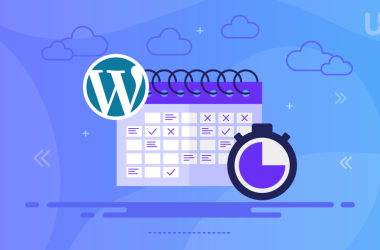Regardless of whether you have an e-commerce store, are a realtor, corporate entity, or freelancer, your website is easily your most important online platform. Sorry, social media, but it’s true. The way that consumers experience your website can either make or break your brand’s success.
There are many elements that comprise a website—text, font, content, resources, and navigation, to name a few. But the one we’re going to focus on is website imagery because, according to most consumers, it could use a little more attention.
Your images say a lot about the quality of your website. They also have a significant impact on Search Engine Optimization (SEO) performance and user experience (UX).
If your website stats are looking dismal, it could have something to do with the images you’re using. What they look like, where you place them, and even how they are being uploaded. So, how do you optimize your website images for the best results? Here’s everything you need to know.
Why are SEO and UX So Important?
SEO and UX are fundamental components of a high-ranking, user-friendly website.
SEO makes sure your site consistently attracts traffic and boosts visibility on search engines like Google.
UX ensures that users enjoy a smooth and engaging experience while on your website. Other benefits include:
- Reduced bounce rate
- Increased conversions
- More consistent website traffic
- Improved profits
- Faster loading speed
- Overall higher user satisfaction
So where do images come into the picture?
Well, images are used extensively on websites, or at least they should be! From front-page visuals to product images and graphics that enhance blog posts and articles, images bring websites to life and enhance SEO potential.
8 Tips For Optimizing Website Images For Enhanced SEO and UX Results
If you’re new to image management or it’s been a while since you had a refresh, don’t panic. There are plenty of ways to improve your site’s SEO and UX performance by reassessing the way you approach images. Eight of the best include:
1. Use concise image names
When most people upload images to their websites, they don’t give the image title a second thought. Why would you? Nobody’s going to see it, right? Wrong.
Not enough people know this, but search engines not only look at the published text on your website; they also take the unseen image names into consideration. Now, imagine if you sell hundreds of products, houses, or services that each have their own image. That’s a lot of opportunities to boost your SEO just by taking a minute to name files correctly.
2. Use a sitemap
A sitemap is exactly what it sounds like. It’s a page that lists every page on your site. It can help you identify dead areas and spot optimization issues, making it easier for you to improve the quality and performance of each page.
3. Avoid large, high-resolution images
Don’t get it wrong. High-quality images are important for positive brand representation and, when used in the right context, can have a positive impact on SEO and UX.
But do you know what consumers hate more than just about anything? Slow loading times.
More than 40% of consumers will abandon a page if it takes longer than three seconds to load, and the ones that stay are considerably less likely to make a purchase.
Unfortunately, large image files with high resolutions can seriously bog down your loading times, making them bad for both SEO and UX performance.
Different image sizes and shapes impact loading times too, so make sure you gain an understanding of what’s needed for your site.
4. Optimize alt attributes
Alt attributes are the text rendition of images that pop up when the image isn’t loading. Even when an image has loaded, the alt attribute may appear on your mouse if you hover over it.
You can optimize your alt attributes by using relevant keywords for the page they’re uploaded to. For instance, if the image in question is of a woman drinking sustainable coffee on a blog post about sustainable coffee, use the keyword “sustainable coffee” in your text. This will help support your SEO algorithm.
5. Select the right image format
There are several different image formats, but only a few of them are appropriate for website uploads. JPEGs, PNGs, and GIFs are the most common.
But all these image types compress at different levels and change quality depending on size. When uploading an image, make sure you select the right format. This is especially crucial for something like real estate listings where viewers want to see quality images that accurately reflect the space. If images are distorted or pixelated, they’ll be an instant turn-off and can cost a realtor valuable business.
Just by checking that your format is correct, you can ensure that users stay on your site for longer as they’ll enjoy looking at the images. This will increase your rankings as your bounce rate will reduce.
6. Be wary of CDNs
CDN stands for Content Delivery Network. It’s a domain that hosts images and other types of media files. Websites use them to increase loading speeds and prevent bandwidth problems.
But when you place your images on a CDN, you often end up removing them from your domain. When you link it, it won’t take users to your site but rather to the CDN domain. This drives traffic away from your website.
7. Don’t use decorative images
Not all images are necessary. Some are decorative. But if they’re not serving a purpose, your website is better off without them. When uploading a new image, ask yourself whether it’s really necessary or if it just slows down your website’s loading time.
Be selective about what you choose to ensure you provide the best UX.
8. Test your images on your audience
Whether you’re using Wix, a WordPress site, a real estate website builder, or a custom-built site, you need to test your image-to-text ratio to find the perfect fit for your audience. To do this, you can ask a test group to evaluate different options, or you can ask for feedback online.
You can also test the number of product images per page and see which options viewers prefer, and you can follow trends to find out how many listings you should have on website pages. You can also use social media as a litmus test to see which images get the most likes before you upload them.
Conclusion
When it comes down to it, optimizing your website’s images is a fairly simple process. Know what image formats work best for your site and your business, stick to them, be intentional about what images you upload, and make use of the opportunity to insert keywords where possible.
All of these practices will boost your site’s performance, encourage more traffic, and make site experiences more engaging for users that do find their way onto your platform.









